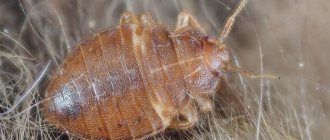Before you grab all the means to combat furry pests, compare the harm they cause with the benefits they bring. For example, they loosen the soil and thereby improve its fertility. But if this is a weak argument, we are ready to suggest several effective ways to protect your garden from these uninvited guests.
Shrews, wild hamsters, mole rats and the like have quite a lot in common. For example, they have a well-developed sense of smell, as well as sensitivity to noise and vibration. They are also quite voracious. All these features of furry pests need to be turned to your advantage by using appropriate means of protection.
What does a mole rat look like, its habits and lifestyle
The mole rat has no tail, the body is cylindrical, covered with hard, dark gray fur, the paws are short and weak, but the claws are quite strong. The head is large, flattened, the ears are not developed. The animal is not just blind, it has no eyes at all, in their place there are dense folds of skin. The lips are also covered with folds, they protect the oral cavity from the entry of earth; only 2 pairs of strong, large incisors stick out, with which it digs the earth.
This is interesting! Individual, stiffest hairs stand out from the wool, and they act as organs of touch.
In the process of digging, the mole rat hits its head on the top of the hole; it determines the direction by the strength of the reverse vibrations; in the same way, the animals communicate with each other and look for a partner. The mole rat breaks through two-story, multi-pass burrows ranging from 200 to 400 meters in length. The upper tier is located at a depth of up to 30 cm, and the lower one from a meter to 4, all exits to the surface are carefully blocked. Let's call the mole rat the owner of an elite home, where the first floor is occupied by a kitchen, and the lower floor serves as a place for rest and storage where he puts his supplies. Mole rats are most active in the afternoon and at night; they do not hibernate.
The mole rat's entire life is spent in the ground; it does not come out, perhaps only at night or in critical cases, for example, when they are fighting intensely against it. The mole rat gives itself away by the fact that, in the process of searching for food, it uses its head to push quite impressive mounds of loose earth to the surface. If you step on such a bump, you can fall into a knee-deep hole.
Natural habitat
The animal lives in steppe and forest-steppe areas in fields and ravines, rarely in deserts. In recent years, the rodent has increasingly appeared on cultivated crops and summer cottages. The mole rat is common in North Africa, Europe and Asia; it is also found in the Western regions of the Caucasus, Ukraine and Moldova. In Russia, gardeners from the Central region most often encounter rodents.
In the wild, mole rats live in colonies, often with up to 20 individuals living on one hectare of land. However, they do not all live together, the animals are not at all friendly, and their meetings can lead to fatal fights.
This is interesting! The mole rat has no natural enemies, except steppe ferrets and large birds, but encounters with them are quite rare. The lifespan of a mole rat is from 4 to 9 years; males have greater survival, since after entering adulthood they settle in new burrows underground; females have to dig holes on the surface, where danger may lie in wait.
In Ukraine, the rodent is listed in the Red Book, most likely due to the fact that most males live separately. If a mole rat creates a family, it consists of three individuals - a male and two females. Their burrows are connected to each other; none of the animals is looking for a new partner for the rest of their lives. Only one female produces offspring per year, mating occurs in early spring, most often the litter consists of 2 or 3 cubs.
What harm does a mole rat cause and how does it differ from a mole?
The striking external differences between a mole and a mole rat include an elongated nose, less clearly visible teeth, and large, developed paws with which the mole digs the ground. The animals build similar burrows, but they feed on different foods; moles prefer worms and larvae, they are predators, but the mole rat is exclusively herbivorous.
The mole rat's favorite food is potatoes, carrots and beets, while at the same time the animal happily eats bulbs of ornamental plants, roots, and sometimes stems with leaves of legumes, asteraceae and umbelliferous crops, which it pulls into the ground and immediately eats. Root crops most often go into storage.
Sometimes summer residents tell truly terrible stories: fruit trees in their gardens fall into the ground, their roots cut into cones. The dug passages interfere with gardening and gardening work, this is understandable; it is extremely unpleasant to constantly fall into holes.
This is interesting! More than 15 kilograms of vegetables were found in the animal’s storage, and this was only in one chamber; when opening the neighboring ones, the weight of the reserves was almost identical, but they mainly contained roots, leaves, and acorns. The weight of daily food is equal to the weight of the animal itself; it prepares actively and thoroughly for winter, so it’s easy to imagine what damage a mole rat can cause to a garden.
Reasons for appearance
This pest, like many others, is looking for something to profit from. Naturally, in their garden or summer cottage, the owners grow everything that is necessary to feed the mole rat. In addition to vegetables, there are worms and enough insects on the site. The higher the yield on the site, the greater the chance that this pest will appear here.
The mole rat does not hibernate during the winter, so it requires a lot of food. It is possible that the pest will definitely settle in the area where the crop is taken care of.
The activity of this pest leaves behind long, several-tiered passages in the garden, as well as underground storerooms in which the animal stores part of the crop grown by the owners in their gardens. As a rule, it eats the green mass first and stores the root crops for the winter. Even one mole rat is capable of taking away a considerable share of the harvest. If several individuals appear on the site, then you can forget about high yields of crops such as potatoes, onions, beets and carrots.
In addition, it digs quite large tunnels, with a diameter of 5 to 15 cm, due to which it damages some plants in the area. The lower tiers can be located at a depth of up to 3 meters, and the upper ones - at a depth of 10 cm. Such a system of underground passages often does not allow the normal development of many cultivated plants.
How to drive a mole rat away from a site
The means and options for controlling rodents are varied, not all give good results, and for the most part they are inhumane. But in critical cases, pity fades into the background, because the damage from the mole rat is very great, you won’t envy those who had to get to know this voracious neighbor!
Fighting mole rats with water
A good option would be to lure out the mole rat by flooding its hole, but given the scale of the underground dwelling, serious work remains. A couple of buckets of water will not do here; you need to completely fill the nests located in the lower tiers.
To find the right place to pour water, take a closer look at the lumps of earth left by the rodent. Those slides where the soil is mixed with clay will be the entrance to the deepest parts of the hole. For the procedure, you should prepare a hose and clear the soil to locate the entrance to the hole. The more water is poured in, the greater the chance that the animal will come out.
Disadvantages of this method:
- those who have water meters have to choose what to sacrifice, finances or harvest;
- when you begin to fill the mole rat’s home with water, he, sensing something is wrong, will begin to move away from your site. As soon as the water completely leaves the holes, the animal can return.
Everyone decides for themselves what to do with a caught rodent; it would be more humane to take it as far away from the site as possible.
Jar traps
A trench up to 30 cm deep is dug along the perimeter of the yard, and boards, roofing felt or slate are laid on top of it. At the bottom of the trench, at a short distance from each other, deep grooves are dug. Large jars or deep buckets can be placed in the holes.
Moving along the trench, the mole rat will sooner or later fall into the hole, but will not be able to get out. There have been successful experiments, but this option still remains in the background. There is no complete certainty that the animal will go into the trench, and it will take a lot of time and effort to implement the idea.
Solomon's Trap
Finally, we’ll tell you about a humane trap for a mole rat; it will get inside the structure and will not be able to get out again. How to build a trap yourself:
- take a piece of pipe at least 6 cm in diameter and up to half a meter in length, in the upper part, 2 holes are cut out on both sides of the pipe, they are needed for attaching the wire;
- cut out 2 covers, it is advisable to take the strongest, bendable material possible. The height of the cover should be slightly larger than the diameter of the pipe, since it will need to be installed with an inward slope and leave some material for fastening on top. It turns out that the height of the lid will be up to 80 mm. The width of the valve is cut slightly narrower than the diameter of the tube;
- pieces of strong wire are threaded into the holes in the pipe and secured on top. The upper part of the lid is inserted under the wire, an allowance of about 1 cm is made, and the edge is folded;
- The mole rat's passage is opened, a pipe is inserted into it and it is buried.
The procedure must be carried out very carefully and quickly, it is important not to arouse the animal’s interest or scare it away. We must try to avoid unnecessary collapses in the hole. Despite the fact that you don’t have to kill, the chance of catching a rodent is too small; rather, the animal will feel threatened, close the exit and dig new tunnels in another place. To check whether a pest has been caught, you will have to dig up and bury the pipe each time.
Appearance
A relatively large rodent - the body length of adults is 20-32 cm, weight up to 700 grams or more. The body is elongated, cylindrical, without a pronounced neck. The limbs are greatly shortened, the tail is reduced and hidden under the skin. The head is flattened, wide (wider than any part of the body), and shaped from above to the bayonet of a shovel. The eyes are largely reduced and hidden under the skin. The outer ear is presented in the form of a small cushion hidden under the fur. The nasal section is covered with a bare horny sheath and is usually colored black or brown. The front incisors are large, protruding far beyond the oral cavity and clearly visible. The general tone of the fur color is fawn-gray-brown; there is significant variability in color between individual individuals.
Ultrasonic repellers
The devices do not provide for catching, much less killing, mole rats; the expectation is that the rodent will leave the area in search of quieter places when exposed to unpleasant noises. Ultrasonic waves, supplied through underground passages on a constant basis, cause panic in rodents; for humans, according to manufacturers, they are not dangerous, but it is better to stay away from it while the repeller is operating.
Principle of operation, how to use repellers
Ultrasonic devices operate from chargers, powerful night batteries or solar batteries. The devices are made in the shape of an elongated cylinder with a pointed end; they are deepened into the soil in those places where the animal has left the largest number of soil tubercles. The devices can protect individual areas of the garden with the mole rat’s favorite vegetables.
Important! When installed, you cannot fall into a hole, otherwise there will be no effect; vibrations are transmitted only along the ground. Leave about 5 cm from the device on the surface, close the lid tightly so that moisture does not get inside. The ground around the device is trampled down, and the device is removed for the winter.
The radius of the waves depends on the power of a particular model; some send signals over hundreds of meters. When installing, remember that there may be various obstacles underground (basements, wells and other garden structures with a foundation) that suppress noise waves. The signal is sent permanently or at short intervals.
Advantages of the device
- The device is durable, caring for it only requires changing the batteries;
- the device takes up little space and does not cause inconvenience to the site owners and neighbors;
- The device is environmentally friendly, it does not harm people and pets, and effectively drives away unwanted underground inhabitants.
Flaws
- Considering the mole rat’s lifestyle, one cannot guarantee that it will go far and for a long time;
- high price;
- It is impossible to determine whether the waves are affecting the animal; you have to wait a long time and observe the behavior of the rodent, if there is no effect, rearrange the device and wait again.
Reviews about ultrasonic devices are very different, but most often gardeners and gardeners talk about good results from use.
Rating of the best repellent devices
Check out a small list of already tried, reliable options:
- Grom-pro M is a device with an aluminum rod, a cover and a tip made of impact-resistant plastic. Equipped with 4 batteries that provide uninterrupted operation for up to 4 months. The device has a built-in eccentric element that enhances the vibration effect. To prevent the animal from getting used to the sound of the device, it operates at different frequencies, and vibrations are sent at different time intervals. One device is enough to protect an area of up to 1500 square meters.
- Remiling terminator AN-A309 - the device is made of durable, waterproof material, runs on 4 AA batteries, has a range of 625 square meters. The device generates oscillations of various frequencies with an interval of 30–35 seconds.
- Tornado OZV 01 – the device is made of durable plastic, the lid is plastic. Powered by 4 D-type batteries, which are enough for the entire warm season. Waves of different frequencies are emitted at equal time intervals. The device is designed for 1000 square meters of land.
- Ecosniper LS-997M - aluminum body, tip and cover made of durable plastic, runs on 4 D-type batteries. Protected area is up to 1500 square meters. The repeller emits powerful sound pulses of variable frequency every 15 seconds. The model is equipped with vibration amplification technology, which significantly increases its efficiency.
The animal will not want to leave its carefully constructed home. You shouldn’t hope for a quick result; the mole rat will rather live in discomfort until the last moment; it will leave only after a month or a month and a half.
Reproduction
Only one female breeds in a family group each year; if there are two females in the group, then in the spring the male leaves the area of the breeding female and forms a pair with the female who will breed next year. Cubs are born from late February to mid-May. There are 2-3 cubs in a litter. The main reproductive contribution is made by females aged 3-7 years. From the end of May, the settlement of young animals from broods begins, partly on the surface, partly underground, the settlement continues until autumn. Young males predominantly settle in the second year of life and mainly underground, females - in the first year and often on the surface, which leads to greater mortality of females in the first year of life. The dispersal range varies from several tens to several hundred meters.
DIY repellent devices
We will talk about various devices and structures that create noise and vibration effects achieved when exposed to wind. The principle of influencing mole rats is identical to ultrasonic repellers, options:
- Pegs are driven into the ground and tin cans are placed on them; children's pinwheels can be used. In the wind, structures will create a hum that is unpleasant for the mole rat, and it will avoid this place;
- Large bottles of wine or champagne are dug into the ground, leaving no more than 3 cm from the container on the surface. They position it obliquely so that the wind gets inside and creates a hum. Disadvantage: after each rain, the bottle must be removed and the water changed;
- A hole is made in the bottom of a plastic bottle the size of the diameter of the peg, elongated windows 1.5 cm wide are cut out on the sides, and they are bent in one direction. A peg is driven into the ground and a bottle with a closed lid is installed. The wind pushes the blades, the container rotates, creating noise, which can be amplified with the help of a metal ball.
Based on the main idea of such devices, you can come up with a lot of similar rattles, the main thing is that the constant noise does not bother you or your neighbors. The disadvantage of this method is that repellers only work when exposed to wind; in closed areas or in calm weather nothing will prevent the mole rat from going about its business.
Lifestyle Features
The behavior of this amazing animal has been little studied.
The giant mole rat leads a sedentary underground lifestyle, constructing multi-tiered complex systems of passages underground in layers of sand. Its incisors are the primary tool for digging passages laid at a depth of 20-50 cm, with a diameter of 11-15 cm. The peak of digging activity is spring (from March to April).
The surface of the earth in these places is indicated by soil emissions in the form of heaps 30-50 cm high with a diameter of up to 1.5 meters. The total length of the tunnels is several hundred meters, and the storerooms and nesting chambers are located at depths of 0.9-3 meters.
The distance between animal settlements is 150-250 m. Very rarely, mole rats come to the surface. The giant mole rat is active all year round and around the clock. He does not hibernate.
Reproduction occurs once a year in early spring. Usually from 2 to 6 cubs are born, which at first stay with the mother, and by the fall they settle. The mole rat (the photo below represents the baby) reaches sexual maturity by the 2nd year of their life.
Chemicals, poisons
The most dubious method of combating mole rats is the use of poisons. Nevertheless, we are going to use such means on our site, where pets and especially children can walk. And given the fact that rat poisons are used against the animal, what can we say about vegetables grown in such conditions. Even if poison is placed in a hole, there is no certainty that the mole rat will not transfer particles of chemicals to other places.
Sometimes you can find advice on combating mole rats with sulfur or insecticidal-repellent smoke bombs, but it is better to abandon this method immediately. Not only the animal will die, but also all the beneficial soil microorganisms; they take a very long time to recover.
Important! Let’s not forget about the cunning of the mole rat: when it smells an unusual smell, it can bypass the bait, especially since it does not experience a lack of food in cultivated areas.
But you don’t have to give up the idea of using repellent drugs; there are products based on non-toxic, aromatic substances that mole rats really don’t like. You can start a serious war on the animal using such drugs together with rattles or ultrasonic repellers.
Mole thrower
The product does not contain harmful substances, is not dangerous for humans, birds and domestic animals, does not kill soil microorganisms and does not change the structure of the soil. Mole thrower has an exclusively herbal composition (extract of garlic and other crops with a pungent odor). If you periodically introduce the drug into mole rat burrows, the problem is actually solved and the rodent leaves the area. But you will have to be patient; you will have to dig holes and place repellent granules in several places and quite often (once every 3 days).
Mole rats have a good sense of smell; they will smell the unpleasant smell of garlic within 2 or 3 hours after introducing the granules near the burrows; the aroma spreads very quickly and reaches the deep chambers of the home. How to use:
- 1 or 2 tablespoons of granules slightly moistened with water are dropped near fresh holes to a depth of 30 cm;
- the drug is also poured near the entrance and exit of the hole;
- To prevent and improve the effect, the product is added dropwise even in areas untouched by the rodent.
The process of scaring away mole rats in this way is quite long, but once the job has started, it is better not to stop, because this drug really works.
Zoocides against pests
The logical conclusion of our article is products specifically designed to combat furry pests. They are the most effective, although people call them poison and “chemistry”. These are drugs such as Ratobor, Varat, Antikrys, Last Breakfast, Storm, Bros. By the way, some of them are harmless to people and pets, for example, Mole Meter ECO.
By the way, if the listed options do not suit you, opt for another type of industrial means against furry animals - an ultrasonic repeller. Due to its low frequency, the sound produced is heard only by pests. This sound scares them - and they leave. How do you drive them away?
Cardinal methods of struggle
The result of installing traps and traps for mole rats is not always positive, however, in the opinion of most gardeners and gardeners, this is the best option. The process is quite complex and labor-intensive; to install traps, they find a fresh hole and dig it up. In the future, you must act strictly according to the instructions for the device.
Some involve domestic cats and dogs in catching small enemies, but the animal must be active; in this matter, a yard cat, a true fighter and hunter, will be a good assistant. In any case, caution does not hurt, because fleas, ticks and helminths live on the body of mole rats.
To make it easier to find a hole, you can make a kind of pike - a long rod made of durable metal with a tip that is comfortable for your hand. They use it to pierce the soil around the earthen embankment left by the animal; places with voids will be felt, the lance will pass more freely, which means it is in this place that you need to dig a hole for the trap.
Important! Do not underestimate mole rats, they are cunning, they have a keen sense of smell and a good memory. Young individuals most often fall into traps, and if they fail to survive, then the rest of the animals will behave more carefully.
The principle of catching is based on the mole rat’s intolerance to drafts and temperature changes; by breaking its holes, we create unfavorable conditions. The animal returns to the problem area to fix the problem and ends up in a trap.
Wire (steel) trap
The design is an elongated spring with a loop, a guard and a pressing foot. After the trap is wound, the compressed spring is held in place by a guard, which, if the structure is installed correctly in the hole, will be an obstacle to the passage of the mole rat. When trying to get further, the mole rat will push the holding plate, the spring will unclench, and the animal’s body will fall into the trap.
The principle of setting a trap may be slightly different, the instructions are always on the packaging, they are quite simple. Typically, such traps are sold in pairs; it is advisable to install both, since it is unknown from which side the mole rat will come.
How to install a trap:
- We have already found a place with freshly dug holes, we dig a trench of such length that we can install 2 traps;
- a guarded trap is placed in the hole so that the open loop faces the entrance and the spring remains visible, the second trap is placed in the other entrance, the springs of both traps are connected and a peg is hammered into the holes;
- The traps must be covered with earth and the trench covered with roofing felt to prevent light from entering.
Usually a rodent is caught within an hour or an hour and a half, but it is advisable to check the trap no more than once every 3 days; it will be quite difficult to frequently dig up and bury holes. You can build a wire trap yourself, but it is a rather complicated process. It’s better not to bother and buy a ready-made trap, especially since it’s inexpensive.
The effectiveness of a trap of this type is quite high. But there is also a slight difficulty: if the animal is not caught in the first 2 or 3 days, the traps need to be moved to another place, which means you will have to dig new trenches. Sometimes the location is changed 3 or 4 times, but eventually the animal will be caught. The advantages include the durability of the device; the only disadvantages are the complicated installation.
Plunger trap Skat 61
The essence of the work of such a trap is that when passing through the tunnel, the animal pushes away the guard that interferes with it, which triggers a spring that activates sharp, strong knitting needles, they sharply fall down, piercing the body of the mole rat. Positive aspects of the device:
- ease of installation;
- one hundred percent result;
- the fact that the trap worked can be seen from the outside.
Disadvantages - the device is rarely found on sale, it costs a lot. Making a plunger trap with your own hands is problematic. If in the case of various nooses the animal dies but remains intact, here you cannot do without blood.
Important! When installing, make sure that there are no stones in the soil; they will hinder the operation of the mechanism and may lead to breakdown. The device is dangerous and should not be kept running.
To set a trap, you need to find the entrance to the mole rat's tunnel and stick the harpoon legs on the sides of the hole, cock the spring, which will insert the guard into the hole. Now the structure can be covered with earth, leaving only a chain on the surface. The striking pins should be positioned across the entrances, the handle should be pulled until the flag engages with the movable platform and the trigger guard.
Trap scissors or plunger trap Skat 62
This type of trap is popular, it often gives positive results, and you don’t have to dig a hole every time; the fact that you have caught a mole rat is immediately obvious. In devices, you can adjust the sensitivity; if this is not done, the trap will react to any irritants (leaves, etc.). The design consists of two pressing arcs, like scissors. On the side of each arm there is a guard and fixation bars that help the trap remain in a guarded position.
When triggered, the trap compresses the mole rat's body on both sides. There are several options for such traps, but they are all based on the same principle of operation, the installation is also the same:
- Before installation, the scissors are moved apart and secured with a spacer;
- the fresh pile of earth left by the mole rat is carefully raked and the entrance to the hole is found, preferably the hole is a passage one (with two entrances on different sides);
- the trap is placed in front of the entrances on the lower claws, so that the “scissors” are directed in both directions of the passage, sprinkled with a little earth and covered with a bucket;
- when the mole rat comes across an obstacle, it will try to remove it with its paws or climb on top, the spacer will fall, the pincers will close and the animal will die. When a rodent is caught, the top of the trap will open.
When placing the trap, make sure that the moving parts are not obstructed by stones or hard lumps of earth. During heavy rains, the trap will become more noticeable in washed-out ground. In cases where the passages are located at great depths, an additional layer of earth will have to be removed due to the small size of the structure.
The undoubted advantage of the device is that even if the mole rats on the site are already adults and experienced, they still will not be able to bypass such a trap.
Important! The device can only be used in those seasons when there is no frost. Low temperatures lead to freezing of the structure and it does not work properly.
Trap-press
You can catch mole rats with ordinary mousetraps; they are sold in any hardware store; you need to take the larger one. The design will be improved a little; in mousetraps, the guard is triggered when it is pulled, not pushed. This problem can be eliminated by filing the loop that holds the guard and onto which the bait is placed. Thus, the trap will work when the mole rat tries to move the loop out of the way; for a better effect, you can put a piece of potato in the place for the bait.
Having installed a trap in a hole, you do not need to dig it in; on the contrary, you should make sure that the bracket does not cling to anything. The installation site can be covered with a pan or bucket. As in the case of a wire trap, you need to install 2 mousetraps so that the guards are directed towards both sides of the passage.
Among the disadvantages of the method, we note only the need for improvement, but the advantages are obvious, it will not be possible to bypass the animal’s trap, large mousetraps will clamp it quite tightly.
The choice is yours, it all depends on what kind of result you want to get. Some summer residents even resort to the most complex, sophisticated methods of control, for example, installing crossbows. In most cases, you can drive away the rodent. using several options aimed not at killing, but at scaring away.
Finally, let’s reveal a little secret – mole rats can’t stand the aroma of parsnips. The plant can be used as a control aid or planted along the perimeter of beds with the rodent’s favorite vegetables. Parsnips are also planted directly into rodent burrows. By losing feeding passages, the animal may leave for good.
Description
Mole rats are rats adapted to digging and living underground. They have short limbs, wedge-shaped skulls, strong neck muscles, large incisors, small eyes and external ears.
In zokors, which dig primarily with their feet rather than with their teeth, the front claws are significantly expanded.
These features are least developed in bamboo rats, which spend part of their time above ground foraging for food. They are most pronounced in blind rats, whose eyes are completely covered with skin, and external ears and tails are completely absent.
All species of mole rats dig large burrows that contain food storage chambers, latrines, and a nest. These are solitary animals and do not share territory with other individuals. All species are herbivores, feeding on roots, bulbs, and tubers.
They give birth to litters of up to six young after a gestation period of three to seven weeks, depending on the species. They are born blind, hairless, helpless. They stay with their mother for several months before setting off to create their own burrows, although some species leave as soon as the female stops feeding.
Introducing cats to hunting
How to get rid of harmful animals using animals? You must first find the places under which underground animal communications are located. Next, they dig out about half a meter of the tunnel with a shovel. As mentioned above, the naked mole rat reacts sharply to a draft. Therefore, having made a hole, you need to wait with the cat for the appearance of a naked animal. It will be especially easy for your pet to catch a young and inexperienced pest. You can also involve a dog with the necessary skills in catching animals on the site.
So which way is the best?
We do not have information on the unambiguous effectiveness of any product, so we will express purely personal experience. If you do not agree with him, you are welcome to comment.
Expert opinion
Vasily Dmitrievich
Local hobby gardener and article editor for Agroved.org.
- The trap method shows the best results, the main thing is not to leave the mole rats alive.
- Poisons are also good, but effective substances are difficult to find in regular stores.
Classic advice - to preserve your harvest, it is better to use several methods of combating mole rats at once.
Many gardeners are well aware of the significant damage that pests such as mole rats cause to the harvest of vegetable and fruit crops. For those who have so far managed to avoid meeting this fur-bearing animal, let us briefly describe it: the rodent has a flattened head, its body is covered with velvety grayish-bluish fur, its eyes are under the skin, which is why it is deprived of vision, and there is no tail. The mole rat digs the ground not with its paws, as a mole does, but with its huge incisors.
A lover of visiting our plots, this underground inhabitant eagerly eats roots, bulbs, and rhizomes of plants, leaving behind only loose piles of earth, as further evidence of his “tricks.”
“The mole rat doesn’t bypass my garden either,” complains the chief agrochemist of the district, V.V. Babskova. “He especially likes onions, carrots, beets and potatoes.”
What have I tried to keep mole rats away from my vegetables? She laid out poisoned baits, set special traps, filled its underground tunnels with water, plugged the entrances to the burrows with a rag soaked in kerosene, placed various homemade noise devices on the site, and made fences around the entire perimeter of the garden. And no use. All my experiments did not have the desired effect on the rodent. Each time, this cunning “hunter” of the harvest escaped with impunity.
And recently I learned from my colleagues - employees of the chemicalization station of the village of Leningradskaya - that there is, it turns out, an effective way to combat mole rats. Moreover, it was invented three years ago and during this time it has already successfully proven itself.
- Essentially, everything is very simple. You will need a one and a half to two liter dark plastic bottle with a lid that has a smooth inner surface; metal wire 5-6 mm thick and 60-70 cm long and a small metal ball (can be taken from an old bearing).
And we begin to design. We make four slits along the entire length of the bottle, 1.5-2 cm away from the neck and bottom, respectively. Then we bend each one by 2 cm.
After this, we heat one end of the wire and pass it through the bottle and cap. It turns out to be such a rod. At its upper end we make a recess and place our metal ball there. Unscrew the plug slightly.
We stick the lower end of the rod into the soil to a depth of 35-40 cm. With a light breeze, the bottle will rotate easily, creating a noise effect that is unpleasant for the mole rat.
Having learned about this device, I must admit, I was amazed at the simplicity of its assembly. All that remains is to put it into practice and personally verify its effectiveness against mole rats. I’m thinking of doing this this spring in order to scare off my “competitors” even before the harvest ripens.
Perhaps someone will want to follow the chief agrochemist of the region and learn in more detail about the new invention of our Leningrad neighbors. In this case, you can call: 7-12-81 (V.V. Babskova).
Similar designs found on the Internet.
Fighting moles using the repellent method
Mole repeller - new version Fighting moles and shrews using repellers.
Mole and rodent repeller "Cosmos"
Mole repeller Help, ultrasonic, battery-powered
Seeing small mounds of earth in the beds, it may seem that a mole has appeared on the site. But, most likely, a mole rat lives there.
These are different animals, differ in appearance and diet
. Unlike the mole, this animal causes much more damage and can destroy the entire crop of root crops.
Activity decreases in winter, but it is not typical for him to hibernate. The animals are larger than moles, which have five toes with claws on their paws, they are more powerful and more developed, since they dig their holes with their front paws. The forelimbs of the mole rat are weaker and do not participate in digging holes.
Is this really him?
The latter rodents are very similar to moles. How can you determine that there is a mole rat in your garden or dacha?
To understand how to deal with a mole rat,
you need to think like a mole rat .
Of course we are joking, just study a few questions:
- what is he afraid of?
- what specialized stores offer;
- study the experience of other gardeners and gardeners.











